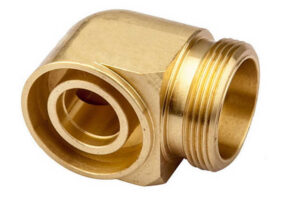Copper Die Casting: Process, Applications, and Benefits

Copper die casting is widely utilized manufacturing process that involves shaping copper alloys into intricate parts and components. This efficient and cost-effective die casting method offers numerous advantages, making it a preferred choice in various industries. In this article, we will explore the process of copper die casting, its applications, and the benefits it offers.
I. The Copper Die Casting Process:
It follows a well-defined process that comprises the following steps:
1. Mold Preparation:
A mold is created using high-quality tool steel. The mold is designed to accommodate the desired size and shape of the copper component to be cast.
2. Molten Copper Injection:
The copper alloy is melted in a furnace, typically consisting of copper combined with other metals to enhance its properties. The molten copper is then injected into the mold under high pressure.
3. Cooling and Solidification:
After the injection, the mold is cooled rapidly to facilitate the solidification of the copper alloy. This ensures the formation of a dense and uniform structure.
4. Ejection and Finishing:
Once solidified, the copper component is ejected from the mold. It may undergo further finishing processes such as trimming, deburring, polishing, or coating, depending on the specific requirements.
II. Applications of Copper Die Castings:
It finds applications in various industries due to its exceptional properties. Some common applications include:
1. Electrical Components:
They are widely used in electrical applications due to their excellent electrical conductivity. They are employed in connectors, terminals, switches, circuit breakers, and other electrical devices.
2. Plumbing and HVAC Systems:
They are utilized in plumbing and HVAC systems, offering corrosion resistance, durability, and excellent heat transfer properties. They are employed in pipe fittings, valves, couplings, and pump components.
3. Automotive Industry:
They are extensively used in the automotive sector for the production of transmission components, engine parts, fuel injection systems, and cooling system components. The high strength and thermal conductivity of copper alloys make them ideal for these applications.
4. Aerospace and Defense:
Copper die castings are utilized in the aerospace and defense industries due to their lightweight properties and resistance to extreme temperatures. They are used in components like connectors, sensor housings, and aircraft engine parts.
III. Benefits of Copper Die Castings:
1. Design Flexibility:
Copper die casting allows intricate and complex shapes to be easily created, enabling the production of customized components as per specific design requirements.
2. High Precision:
The die casting process ensures tight dimensional tolerances, resulting in high precision and consistency across multiple production runs.
3. Excellent Mechanical Properties:
Copper die castings exhibit excellent mechanical properties like high strength, durability, and wear resistance, making them suitable for demanding applications.
4. Heat Transfer Efficiency:
Copper alloys possess excellent thermal conductivity, allowing for efficient heat transfer in various applications, particularly in heat exchangers and cooling systems.
5. Corrosion Resistance:
Copper die castings offer high resistance to corrosion, enhancing their durability and longevity in harsh environments.
Conclusion:
Copper die casting is a versatile manufacturing process that offers numerous advantages in various industries. Its ability to produce complex shapes, excellent mechanical properties, and high thermal conductivity make it an ideal choice for applications requiring precision and durability. With continuous advancements in technology and material science, copper die casting is expected to play a significant role in shaping the future of manufacturing.






